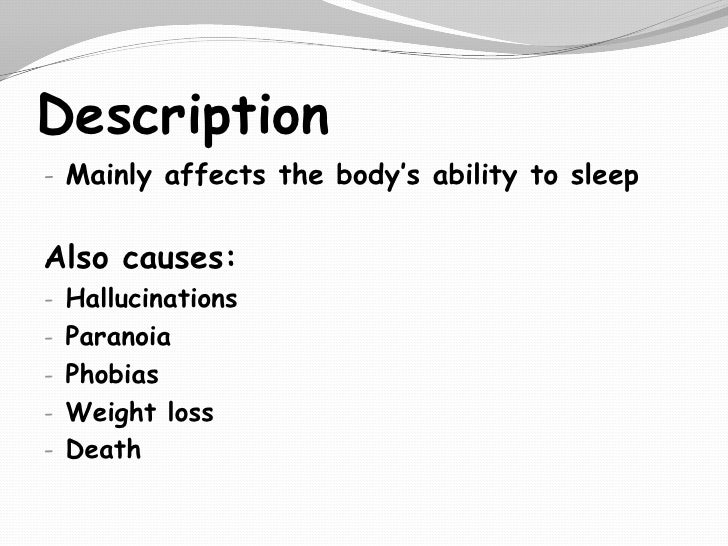
Ataxia, pyramidal sign, extrapyramidal sign and dysarthria were also observed. hypertension, sweating, tachycardia, and irregular breathing were also presented by the patients enrolled in this study.

Other patients had severe dementia and they could not complete cognitive scales. MMSE (mini-mental state examination) scores of case 1 and case 2 were only 4 (Normal reference ≥ 20), CDR (clinical dementia rating) of case 5 was 2.

Furthermore, we have observed the development of a rapidly progressive dementia (RPD) along with psychiatric symptoms in all patients. The most prominent clinical manifestations in all five patients was sleep disturbances that included insomnia, laryngeal stridor, sleep breath disturbance, oneiric or stuporous episodes with hallucinations and confusion, and sleep-related involuntary movements (such as hypnic jerks, restless sleep with frequent changes in body position and twitchy non-purposeful movement of limbs). The median age at FFI onset was 46.4 years (from 19 to 62 years) and the duration of the course of FFI ranged from 8 to 18 months. This study aims to understand the pathogenesis of sleep related disorders in FFI.Ĭlinical characteristics and neurological featuresĪ total of five FFI patients of Chinese Han decent (2 males and 3 females) were enrolled in the current study. Here, we have analyzed the clinical manifestations and biological changes, especially the sleep related symptoms, PSG and brain imaging results of five Chinese patients diagnosed with FFI. Nevertheless, the mechanism and diagnostic value of sleep related respiratory disturbance and movement disorder in FFI have not been studied thoroughly yet. Further, husky voice was reported in 22% of FFI patients in Germany 9. Irregular breathing, hypnic jerks, propriospinal myoclonus at the wake-sleep transition, and quasi-purposeful limb gestures are considered to be characteristic features of FFI 6, 7. In some cases, FFI was characterized by the lack of REM-associated muscle atonia and the presence of jerky activity of limb muscles and irregular breathing 8. In FFI, PSG has disclosed a severely reduced total sleep time, reduced rapid eye movement (REM) sleep and abnormal stage shifts. Polysomnography (PSG) recordings document the biophysiological changes that occur during sleep. FFI is mainly characterized by prominent sleep impairment combined with neuropsychiatric disorders, dysautonomia and motor dysfunction 7. Phenotypic variability is a perplexing feature of FFI. Pathologically, FFI is characterized by predominant thalamic degeneration especially in the medio-dorsal and anterio-ventral nuclei 5, 6. The prevalence of FFI is one case per a million population per year, with only about 57 cases in 27 kindreds have been reported worldwide 2.įFI is an autosomal dominant disease that harbors a missense GAC to AAC mutation at codon 178 of the PRNP prion protein gene located on chromosome 20, along with the presence of the methionine polymorphism at position 129 of the mutant allele 3, 4. We propose that structural damages in the thalamus and cortex are mostly responsible for clinical manifestations of FFI.įatal familial insomnia (FFI) is a rare prion disease first described by Lugaresi et al., in 1986 1. In summary, Chinese FFI patients are typically characterized by organic sleep related symptoms, rapidly progressive dementia and sympathetic symptoms. Patient 2's emission tomography scan demonstrated a reduction in glucose uptake in the left thalamus and bilateral inferior parietal lobe. PSG of all these five cases showed reduction in total sleep time, sleep fragmentation, abnormal short non-rapid eye movement - rapid eye movement (REM) cycling, REM sleep reduction or loss, and REM sleep instruction in wakefulness. The most typical clinical manifestations in all 5 patients were sleep disturbances, including insomnia, laryngeal stridor, sleep breath disturbance, and sleep-related involuntary movements. Three of the five patients had more comprehensive family medical records. Two male and three female patients were recruited in this study.


The clinical features and the results of the complementary tests, including polysomnography (PSG), brain imaging and genetic analysis, were used. Patients with confirmed clinical and laboratory diagnosis of FFI have been retrospectively reviewed. This study aimed to examine clinical features, sleep, abnormal sleep-wake transition and non-sleep disturbances as well as lab tests in Chinese fatal familial insomnia (FFI) subjects.


 0 kommentar(er)
0 kommentar(er)
